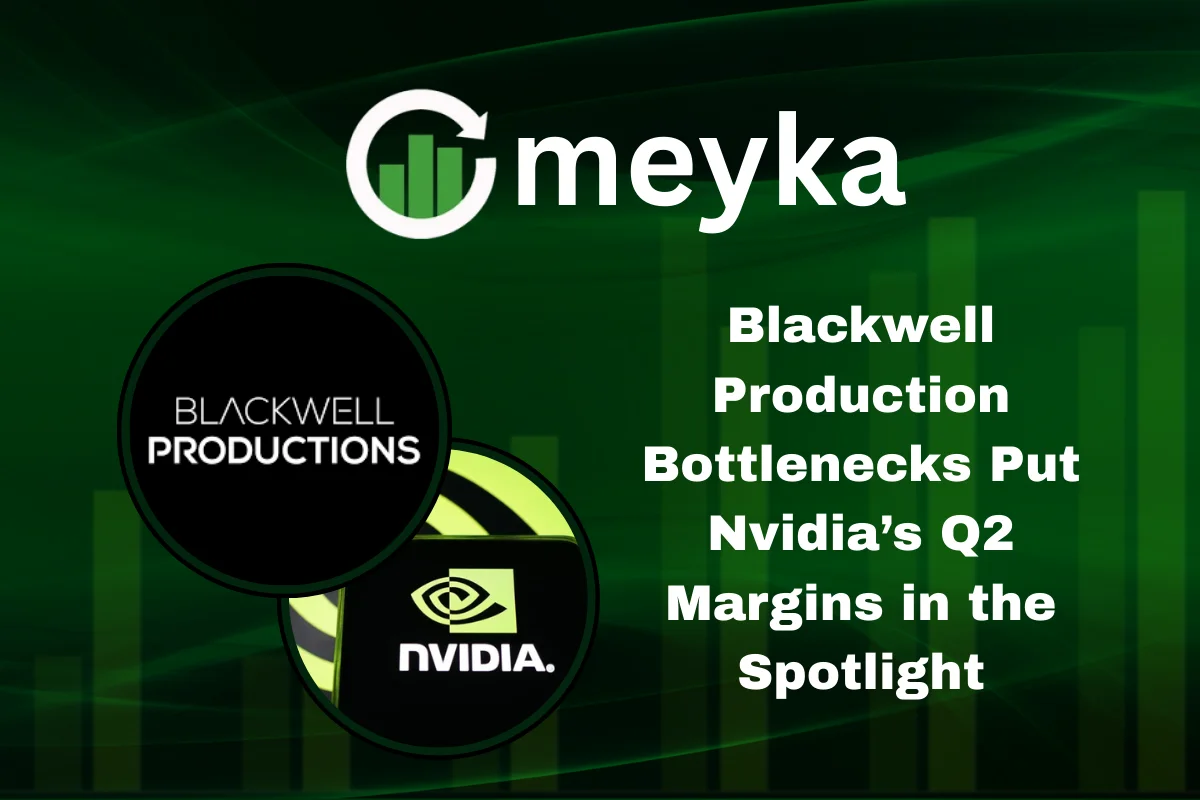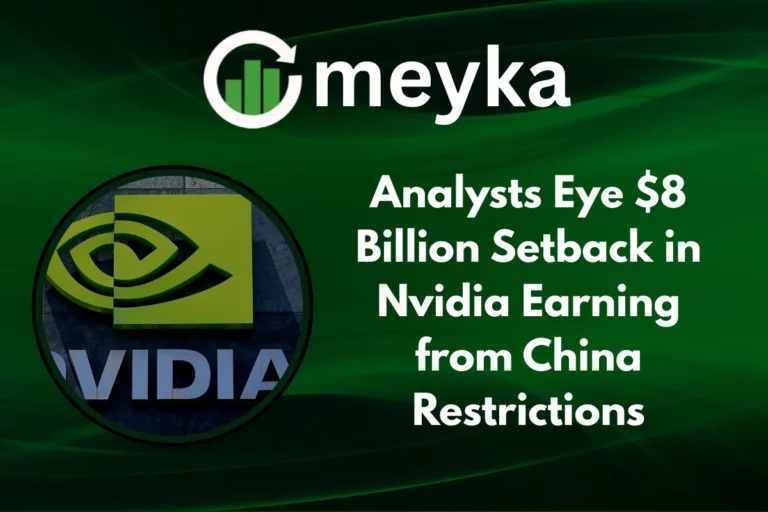Blackwell Production Bottlenecks Put Nvidia’s Q2 Margins in the Spotlight
Nvidia (NVDA: NASDAQ) has become one of the most closely watched companies in the stock market, especially as the leader in AI chips. With its dominance in data centers and AI infrastructure, the company has attracted massive investor interest. However, recent concerns over Blackwell production delays have raised questions about Nvidia’s profit margins in the upcoming second quarter.
The company’s ability to maintain strong margins while dealing with supply chain constraints could determine not only its near-term stock performance but also the broader outlook for AI stocks.
Nvidia’s Growth and the Role of Blackwell Chips
Nvidia’s GPUs have been at the center of the global AI boom. The company’s A100, H100, and now the Blackwell architecture represent key stages in this evolution. Blackwell GPUs, designed to support next-generation AI workloads, are expected to deliver faster training speeds, higher efficiency, and lower power consumption.
Analysts have described the Blackwell line as a “game-changer,” especially for cloud providers, enterprises, and research institutions racing to build advanced AI models. But with great demand comes the challenge of supply.
The Blackwell production bottlenecks are being closely monitored by investors, as delays could mean lost market opportunities and pressure on Nvidia’s quarterly margins.
Why Production Bottlenecks Matter
In technology manufacturing, production bottlenecks often lead to higher costs and reduced efficiency. For Nvidia, any delay in Blackwell production affects its ability to meet massive demand from hyperscalers such as Microsoft, Amazon, and Google.
These companies are investing billions into AI infrastructure, and they rely on Nvidia’s GPUs. If Nvidia struggles to deliver, not only could it affect its revenue growth, but it might also open the door for competitors like AMD or custom AI chips from large tech firms.
The biggest concern for investors is how these bottlenecks will reflect on Nvidia’s Q2 profit margins. When demand is high but supply is limited, companies may face higher production costs, reliance on costly alternative suppliers, or increased shipping expenses.
Impact on Nvidia’s Q2 Margins
Wall Street has placed Nvidia’s Q2 earnings under a microscope. The company has enjoyed record-breaking profits in recent quarters, with margins boosted by premium pricing on AIPUs.
However, if Blackwell production fails to keep pace, Nvidia may face:
- Reduced operating leverage as fixed costs rise against constrained output.
- Pressure on gross margins due to higher manufacturing costs.
- Potential revenue recognition delays if large customer orders are pushed into later quarters.
Still, Nvidia’s strong pricing power could help offset these risks. Given the urgent need for AI chips, customers are often willing to pay higher prices, ensuring Nvidia maintains profitability even under supply strain.
Market Reaction and Stock Performance
Nvidia shares remain one of the hottest assets in the stock market. Investors view it as the backbone of AI infrastructure, and many believe the long-term demand for GPUs outweighs temporary challenges.
Yet, the uncertainty around Blackwell production has introduced volatility. Stock analysts have issued mixed guidance: some argue margins could temporarily tighten, while others believe Nvidia’s brand strength and pricing will keep results strong.
For investors engaging in stock research, the key lies in balancing short-term risks with long-term growth. While Q2 margins may face pressure, Nvidia’s multi-year growth in AI remains compelling.
The Bigger Picture: AI Competition and Industry Trends
Beyond Nvidia, the AI stock market is expanding rapidly. Competitors like AMD are pushing their own AI-focused GPUs, and companies such as Google and Amazon are building custom silicon for AI.
If Blackwell production bottlenecks persist, it could accelerate adoption of alternatives. However, Nvidia’s CUDA ecosystem and software leadership continue to provide a competitive moat.
Additionally, the demand for AI infrastructure is growing so fast that even competitors may struggle to keep up. This means Nvidia could still capture enormous revenue opportunities once production scales smoothly.
Investor Outlook and Stock Research Insights
For investors analyzing Nvidia through stock research, three themes stand out:
- Short-term risks: Q2 margins may face downward pressure due to production issues.
- Long-term opportunity: AI demand is structural, and Nvidia’s role remains central.
- Valuation sensitivity: Nvidia’s stock trades at a premium, meaning any miss in quarterly results could trigger short-term pullbacks.
Smart investors will monitor not just headline revenue, but also margin trends, supply chain updates, and guidance.
Conclusion
The Blackwell production bottlenecks put Nvidia’s Q2 margins in the spotlight, but they do not overshadow the company’s long-term position as a leader in AI infrastructure. While supply challenges may affect short-term earnings, the overall growth trajectory for AI computing remains intact.
For investors in AI stocks, Nvidia continues to represent both opportunity and risk. The key will be separating temporary margin pressures from structural growth, ensuring investment decisions are guided by deep stock research rather than short-term noise in the stock market.
FAQs
The bottlenecks stem from supply chain constraints, limited advanced semiconductor capacity, and overwhelming demand from AI hyperscalers.
Delays may lead to tighter profit margins, higher costs, and potential revenue recognition shifts, though strong pricing power could offset some risks.
While short-term risks exist, Nvidia’s leadership in AI chips, software ecosystem, and market demand suggest strong long-term growth potential.
Disclaimer:
This content is made for learning only. It is not meant to give financial advice. Always check the facts yourself. Financial decisions need detailed research.






